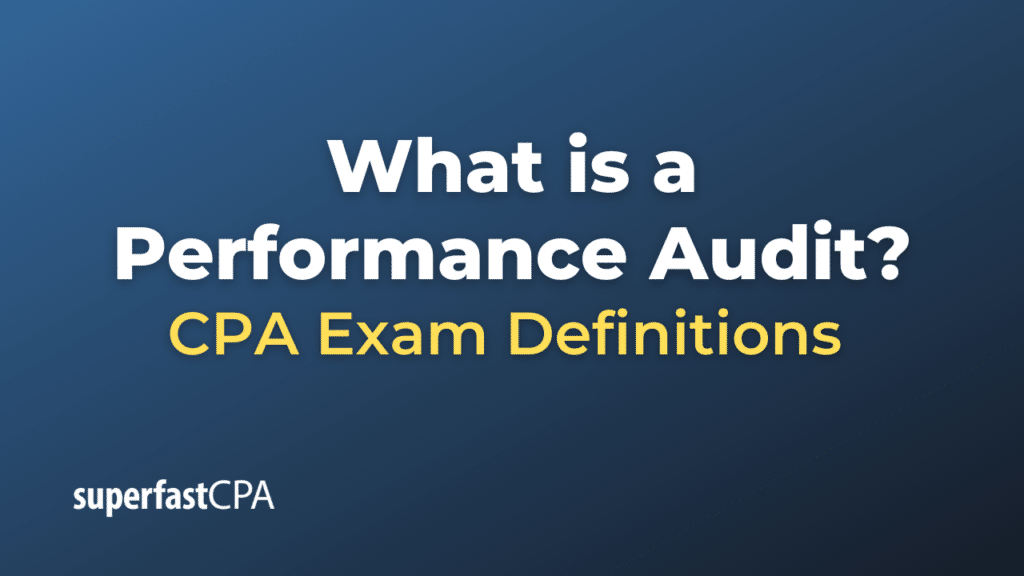Performance Audit
A performance audit is an independent, objective evaluation or examination of an organization’s operations, programs, activities, or functions to assess whether the entity is achieving economy, efficiency, and effectiveness in the employment of available resources. The audit is not only concerned about compliance (whether rules or regulations are followed) but also about whether the results intended by those rules or regulations are achieved.
A performance audit can be carried out in any part of an organization, and the scope can range from reviewing the performance of an entire organization to specific processes or operations within the organization. Here are some areas that a performance audit might evaluate:
- Effectiveness: Whether the organization is achieving its goals and objectives.
- Efficiency: Whether resources (like time, staff, or money) are being used in the best possible way to achieve objectives.
- Economy: Whether resources are acquired at the best possible price and quality.
- Compliance: Whether the organization is adhering to relevant laws, regulations, policies, and procedures.
- Internal controls: Whether the organization’s internal control systems are adequate and functioning effectively.
The findings from a performance audit can be used to provide recommendations for improvement, develop best practices, inform decision-making processes, or provide accountability to stakeholders. Performance audits can be conducted by internal auditors (from within the organization) or external auditors (independent bodies or individuals).
Example of a Performance Audit
Let’s consider the example of a performance audit being carried out for a public transportation agency:
- Objective: The objective of the performance audit might be to evaluate the effectiveness, efficiency, and economy of the agency’s operations. The audit may also seek to assess compliance with relevant transportation and safety regulations and the adequacy of internal controls.
- Scope: The audit might focus on areas such as maintenance of the transportation fleet, fare collection systems, customer service processes, safety protocols, route planning, and financial management.
- Procedure: The auditors will gather data through methods such as reviewing operational and financial records, conducting interviews with management and staff, observing operations, and possibly surveying customers. They might also compare the agency’s performance with industry benchmarks or best practices.
- Findings: Based on the data gathered, the auditors might find that the agency is efficient in some areas, such as maintaining its transportation fleet, but less efficient in other areas, like customer service response times. They might find that the agency is generally in compliance with safety regulations but could improve in certain specific aspects. They might also find that certain routes are underutilized and costing the agency more money than they bring in.
- Recommendations: The auditors might recommend actions such as improving customer service training, enhancing certain safety protocols, reviewing and optimizing transportation routes, and strengthening financial controls.
- Follow-Up: After the audit report is presented, the auditors might conduct a follow-up audit after a certain period to assess whether the agency has implemented the recommendations and to measure improvements in performance.
A performance audit like this can provide valuable insights that help an organization improve its operations, comply with regulations, use its resources more efficiently, and better serve its stakeholders.













